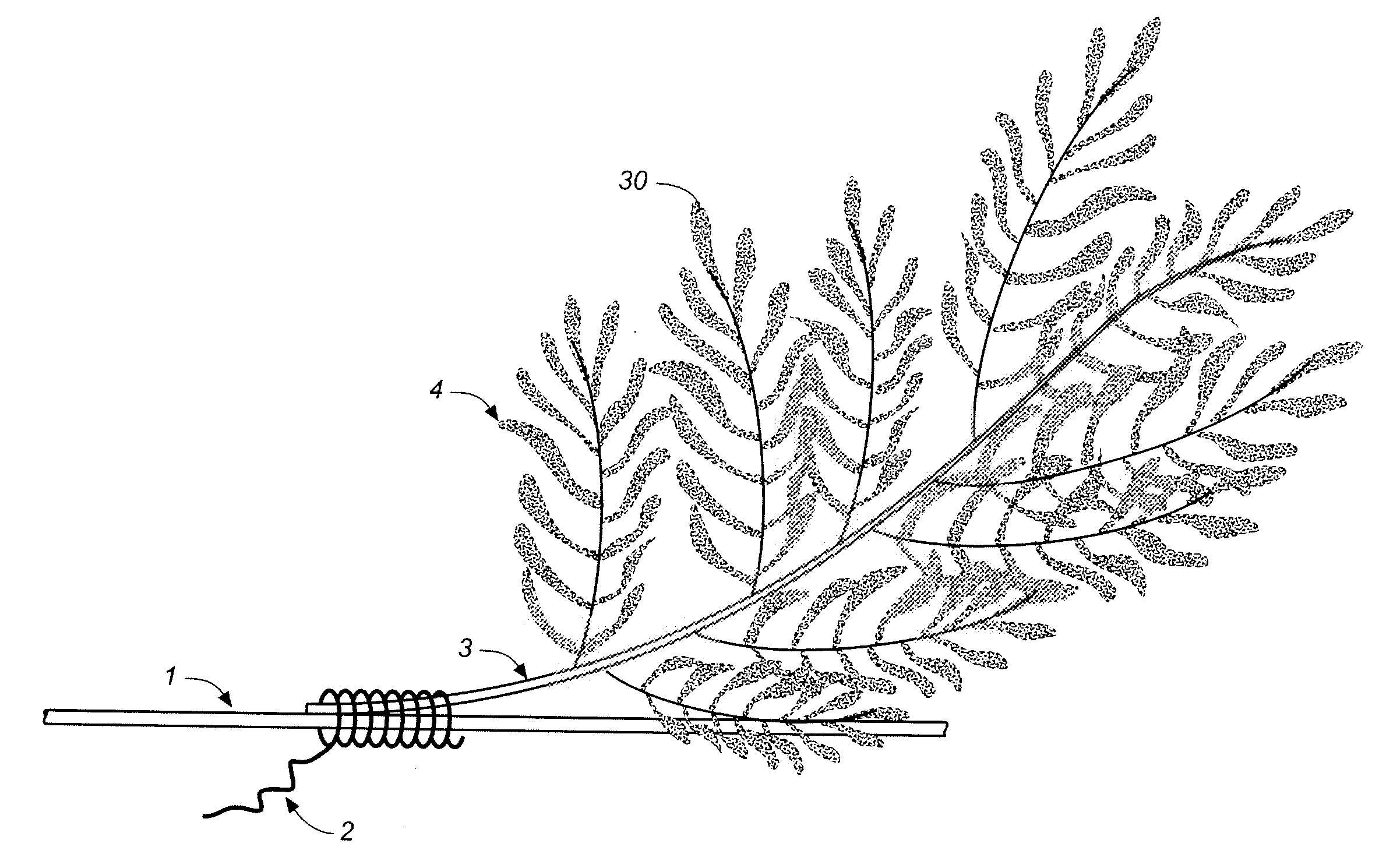Crawling insect barrier device and corresponding method
a technology of insect barrier and crawling insect, which is applied in the field of crawling insect barrier device and corresponding method, can solve the problems of people being exposed directly to dangerous agents, using chemicals, and using chemicals in some areas (such as kitchens) may not be desirable, and achieves the effect of convenient use and application
- Summary
- Abstract
- Description
- Claims
- Application Information
AI Technical Summary
Benefits of technology
Problems solved by technology
Method used
Image
Examples
Embodiment Construction
[0086]The crawling insect barriers according to the present invention comprise a combination of elements that creates a natural physical barrier to ants and other crawling insects. The structures preferably used in the barriers according to the present invention are similar to down feathers (i.e., downy). The downy structures are feathery, lightweight, durable, fluffy, soft and have many tiny, flimsy filaments, with many offshoots. The filaments are difficult for some larger ants and other crawling insects to grasp, while smaller ants and insects merely get lost, or are unable to lay a chemical trail. The downy structures have sizes ranging from between 2 cm and 12 cm (averaging about 10 cm). The downy structure are attached, preferably sewn with a needle and thread, onto a base (e.g., an elastic or other string or rope, or onto a surface of an elongated band or strap). The downy structures are preferably tightly packed in order to form a more impenetrable barrier to crawling insect...
PUM
 Login to View More
Login to View More Abstract
Description
Claims
Application Information
 Login to View More
Login to View More - R&D
- Intellectual Property
- Life Sciences
- Materials
- Tech Scout
- Unparalleled Data Quality
- Higher Quality Content
- 60% Fewer Hallucinations
Browse by: Latest US Patents, China's latest patents, Technical Efficacy Thesaurus, Application Domain, Technology Topic, Popular Technical Reports.
© 2025 PatSnap. All rights reserved.Legal|Privacy policy|Modern Slavery Act Transparency Statement|Sitemap|About US| Contact US: help@patsnap.com



